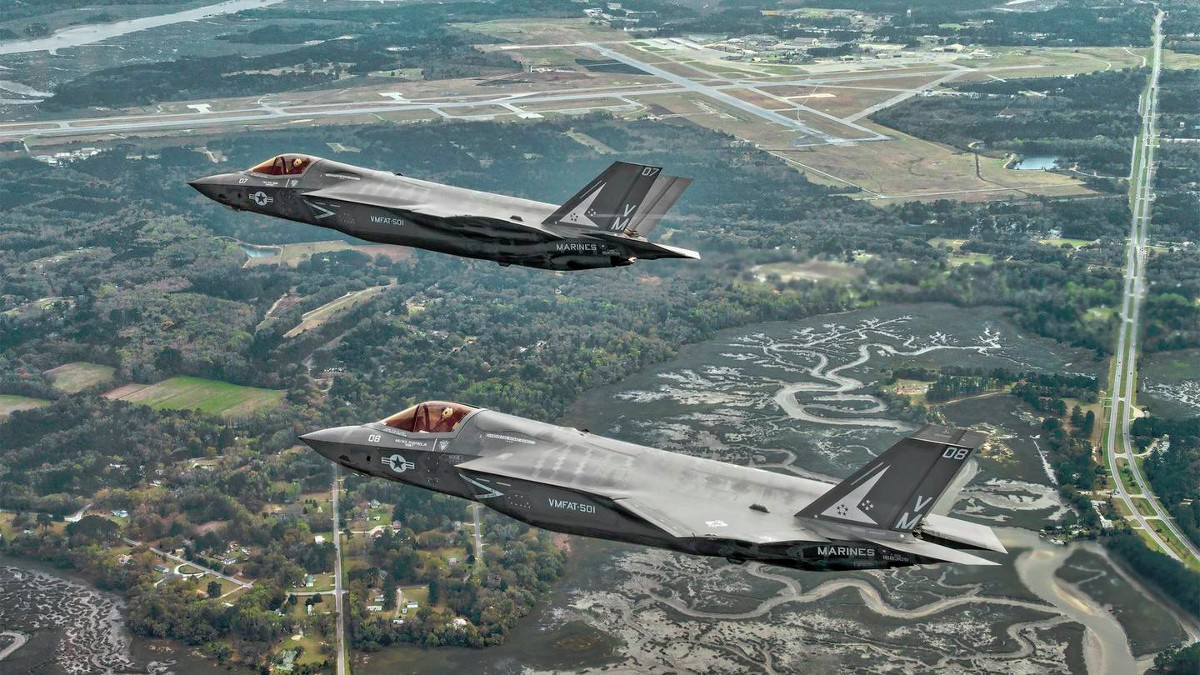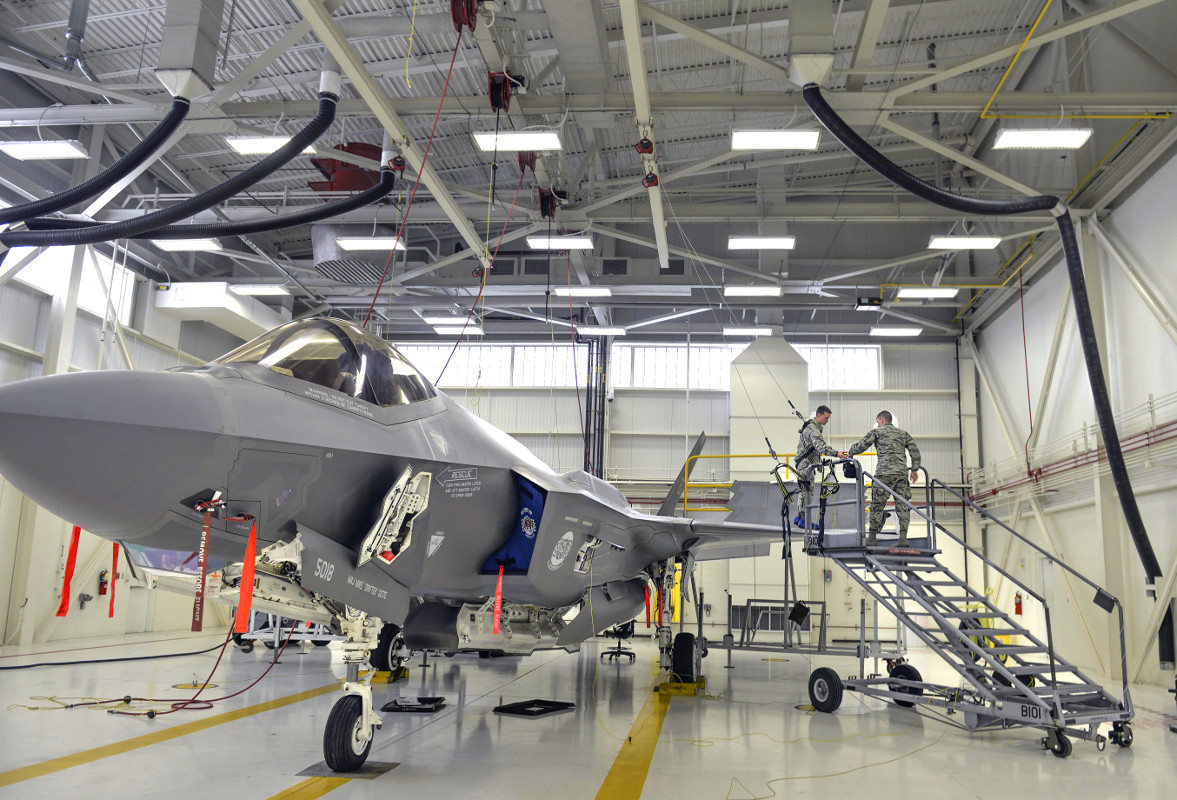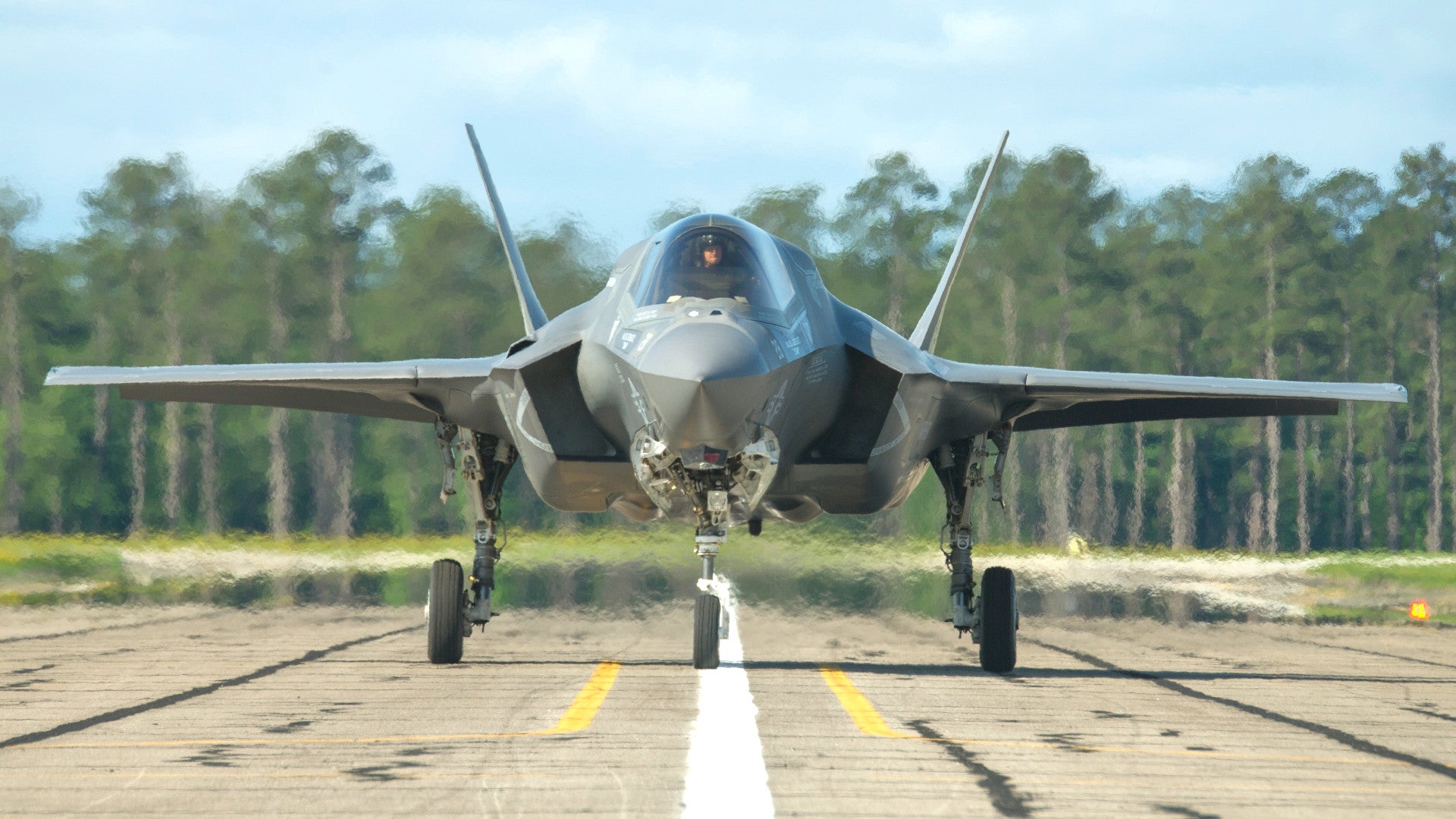The U.S. Air Force, Marine Corps, and Navy have all stopped flying their F-35 Joint Strike Fighters, as have international operators, in order to inspect and potentially replace faulty fuel tubes common to all three variants of the aircraft, a process that should thankfully only last one or two days. Investigators looking into the cause or causes of a Marine F-35B crash in September 2018 uncovered the issue, which comes amid a Pentagon-mandated effort to boost the Joint Strike Fighter’s availability rates and raises serious questions about increased reliance on a single family of combat jets.
The Pentagon’s central F-35 Joint Program Office (JPO) announced the grounding on Oct. 11, 2018. The inciting incident occurred on Sept. 28, 2018, when an F-35B from Marine Fighter Attack Training Squadron Five Zero One (VMFAT-501) crashed at Marine Corps Air Station Beaufort in South Carolina. The pilot of that aircraft was able to safely eject, but the stealth fighter was a total loss.
“The U.S. services and international partners have temporarily suspended F-35 flight operations while the enterprise conducts a fleet-wide inspection of a fuel tube within the engine on all F-35 aircraft,” the JPO said in a statement. “If suspect fuel tubes are installed, the part will be removed and replaced. If known good fuel tubes are already installed, then those aircraft will be returned to flight status. Inspections are expected to be completed within the next 24 to 48 hours.”
The investigation into the September 2018 crash is still ongoing and it is not clear whether or not the fuel tube issue was the only factor in that mishap. In April 2018, another F-35B made an emergency landing at Marine Corps Air Station Cherry Point in North Carolina after suffering a major fuel leak, according to Marine Corps Times.

It is not clear how widespread and mandatory the pause actually is, though. The U.K. Ministry of Defense said it had stopped some flight activities in response to the JPO’s findings, but that the flight trials of its F-35B aircraft on the aircraft carrier HMS Queen Elizabeth would continue. Israel, which has operational F-35s and has used them in combat, however, said that it would implement a pause to inspect its aircraft. The Italian Air Force, which has less than 10 jets, has already finished the inspections, according to Foreign Policy.
“This is engine-by-engine, aircraft-by-aircraft,” an unnamed source told Military.com in relation to the F-35B fuel tube issue. “[It is] not a grounding where all aircraft need to sit out to for a select period of time.”
Regardless, this is not the first time portion of or the entire F-35 fleet has ended up grounded
due to technical issues and doing so is not an uncommon decision depending on the severity of the issue. It’s not a rare occurrence for combat aircraft in general, either.
Still, a fleet-wide stop in operations is still a significant development for an aircraft that is in use, at least at some level, across three major U.S. military services and nine foreign countries. Lockheed Martin has delivered more than 320 Joint Strike Fighters, the vast majority of which have gone to the United States, and could ultimately build thousands of the jets.
It does come as the Air Force, Marines, and Navy are to trying to meet the new goal of having 80 percent of their F-35s available for operations in the 2019 Fiscal Year, which began on Oct. 1, 2018. On Sept. 27, 2018, Secretary of Defense James Mattis issued a memo demanding the services meet that benchmark for the Joint Strike Fighter, as well as the F-16 Viper, F/A-18 Hornet and F/A-18E/F Super Hornet, and F-22 Raptor.
With regards to the F-35, low availability rates are a product of a wide array of issues, including software problems, mechanical defects, and difficulty in getting broken jets repaired in a timely manner, all of which the Pentagon has often struggled to address. These challenges are exacerbated by a process known as “concurrency,” that has left the U.S. military with hundreds of the stealth fighters that are not up to the latest standards and may be too costly to update at all. The JPO hopes that its broad upgrade plan, known as Continuous Capability Development and Delivery, or C2D2, yet another concurrent process, will get approved by the end of October 2018.
The F-35 program has hit a number of important milestones in 2018, as well. Most notably, the Marines flew their first-ever combat missions with F-35Bs over Afghanistan in September 2018.

But beyond underscoring that the Air Force, Marines, and Navy still have a ways to go before reaching full operational capability with their respective F-35 variants, this latest grounding highlights potentially serious issues that might occur when they do. For the Air Force and the Marines, in particular, the goal is for the Joint Strike Fighter to become by far the dominant fixed-wing tactical jet platform in those services.
As such, the size and scope of the F-35 program raises the worrying possibility that the discovery of a more serious fleet-wide issue that demands a prolonged grounding to solve could dramatically slow operations or even bring them to a halt entirely. As a result, American tactical jet air power capability would be largely gutted. That the services have operated a more a diverse array of combat jets in the past has meant that other types could pick up the slack when groundings occur.
The force mix the Marine Corps is pushing for, in particular, does not involve other combat jets of any kind, with F-35 variants eventually replacing both the AV8 Harrier jump jet and F/A-18 Hornet fleets. This already means the service will have no choice but to employ the expensive to operate stealth fighters in the future irrespective of the potential threats and nature of the enemy targets.
The alternative in a more extreme scenario would be to continue conducting operations, but with the added risk of losing aircraft to known technical problems, and check for faults in the course of routine maintenance. That, in turn, could sap morale and make pilots and their unit commanders more risk-averse, potentially degrading operational effectiveness.

The War Zone was the first to report that the Air Force had made a similar decision to resumed B-1 flight operations before it had inspected all of the aircraft to see if they contained the faulty component related to the aircraft’s ejector seat after a dangerous in-flight emergency. The Air Force considered it an acceptable risk in order to continue important combat sorties in Iraq, Syria, and Afghanistan, as well as conduct routine training missions.
“Combat is an inherently risky business, but the Air Force works hard to minimize the risks its Airmen face,” an Air Force Global Strike Command spokesperson told us via Email regarding the decision to get the B-1s flying again. “Ensuring our aircrew can fly, train and stay proficient is important to minimizing risk in combat. The Air Force strives to mitigate risks to the aircrew while allowing them to continue vital training.”
Unfortunately, the question in the future might be less about what the acceptable level of risks is, but rather whether there are any alternatives to continuing to fly F-35s during a major crisis, even if a serious technical problem emerges.
Contact the author: jtrevithickpr@gmail.com
